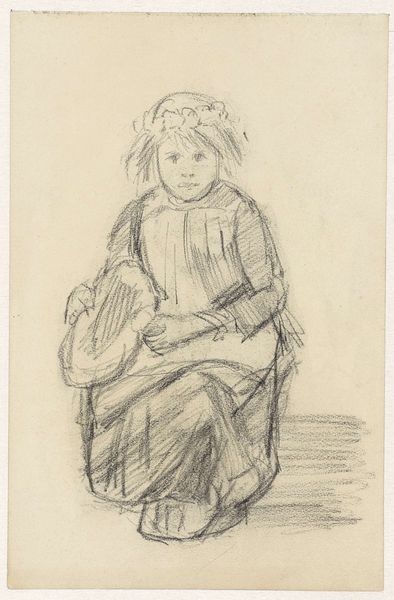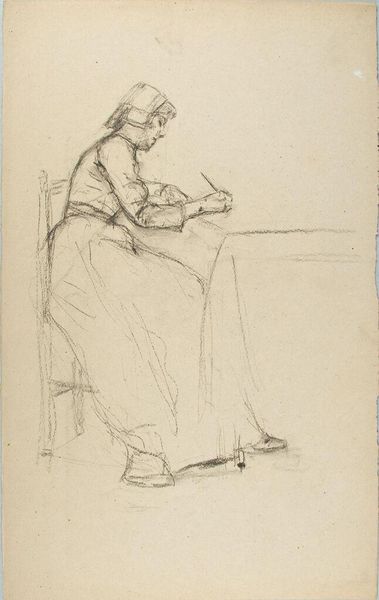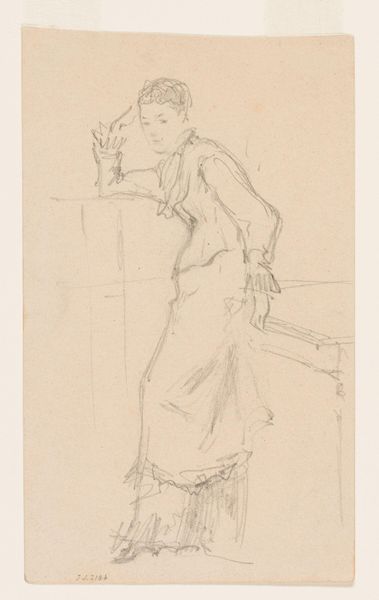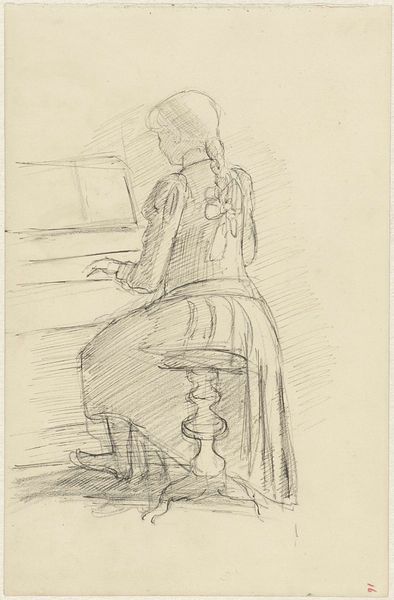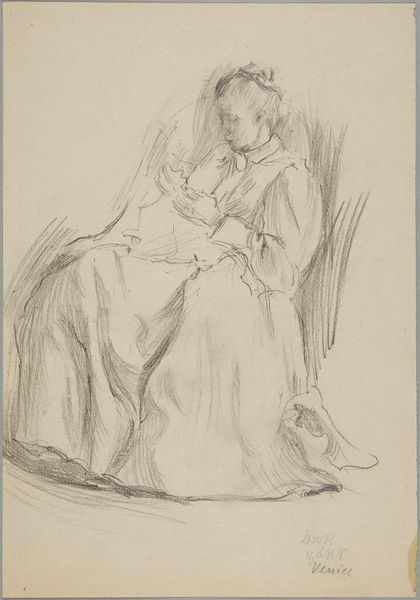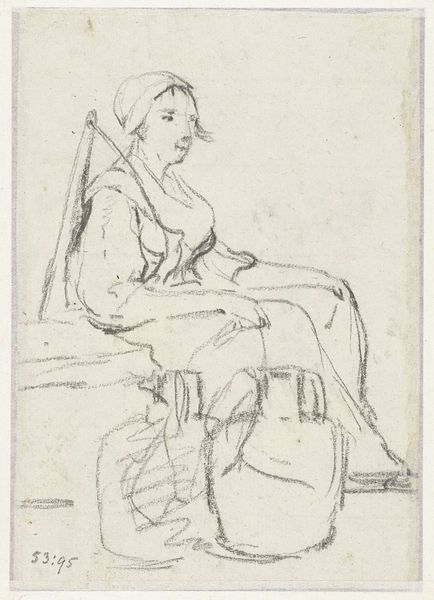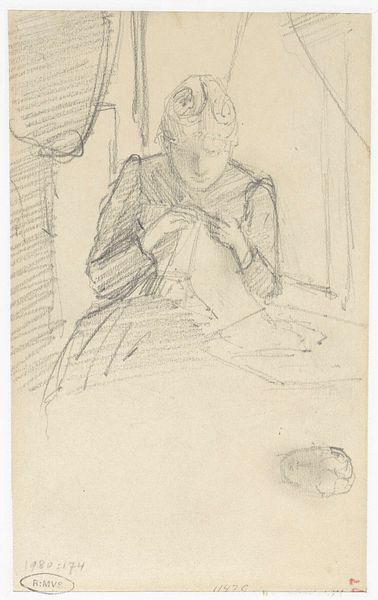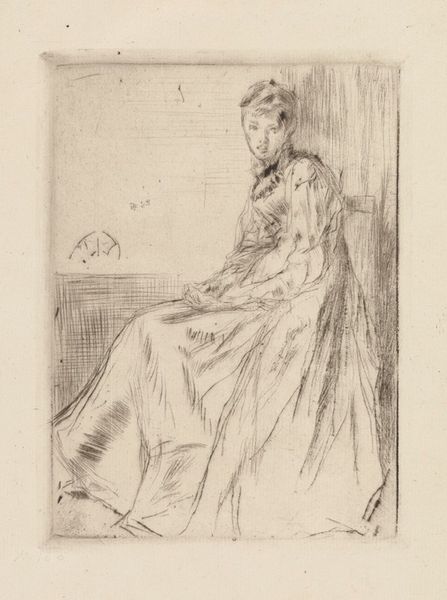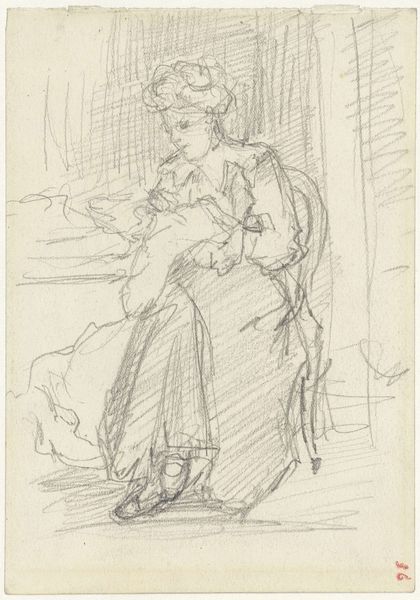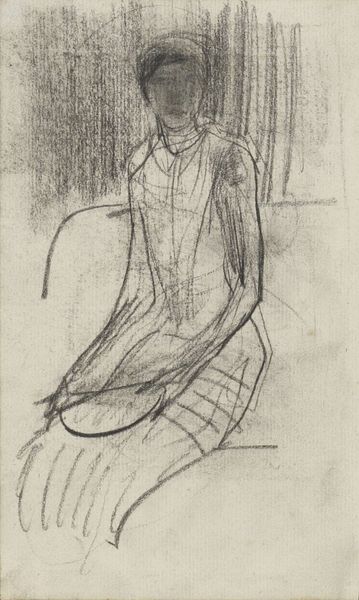
drawing, pencil
#
pencil drawn
#
drawing
#
pencil drawing
#
pencil
#
portrait drawing
#
genre-painting
#
academic-art
#
realism
Dimensions: 299 mm (height) x 201 mm (width) (bladmaal)
Curator: This is Carl Bloch's "Syende pige (kunstnerens hustru)", or "Sewing Girl (The Artist’s Wife)" made around 1867. It's a pencil drawing, currently held at the SMK, the National Gallery of Denmark. Editor: My immediate response is quiet contemplation. There's a stillness, a domesticity to this scene, yet the sketch-like quality hints at something unresolved. It evokes a feeling of gentle intimacy but simultaneously presents the woman in a passive role, confined to her sewing. Curator: I see that. Note the delicate, precise rendering of her hands, juxtaposed with the looser strokes defining her dress. This interplay between detailed realism and suggestion adds depth and interest. The formal elements guide our eye through the composition, focusing primarily on the subject’s posture and task. Editor: Precisely. It's vital to consider what her sewing represents. In 19th-century bourgeois culture, needlework was almost a mandated skill for women—it symbolized domesticity, submission, and confinement to the private sphere. Therefore, her occupation becomes a commentary on gendered expectations, revealing both skill and subjugation. Curator: One might argue it's merely a portrait of his wife in a moment of everyday life. Bloch's academic style and realistic portrayal reflect a desire to capture a true likeness. This kind of scene aligned with Realism, finding art worthy in everyday life. Editor: But can we separate a portrait from the cultural codes within which it exists? The deliberate depiction of his wife sewing anchors her within these societal expectations, either reinforcing or perhaps subtly critiquing them, consciously or unconsciously by the artist. We need to examine whose realities get represented, and how. Is it empowerment or further objectification under the male gaze? Curator: It is difficult to say what the true intention behind its creation was; this scene provides insight into how art creation relies heavily on the subjects presented, be it through societal expectations or emotional representation. Editor: Absolutely. A powerful reminder to critically assess how artworks – even seemingly simple portraits – are infused with broader societal currents and reflect the artist's perspectives and choices about whose realities are showcased.
Comments
No comments
Be the first to comment and join the conversation on the ultimate creative platform.

